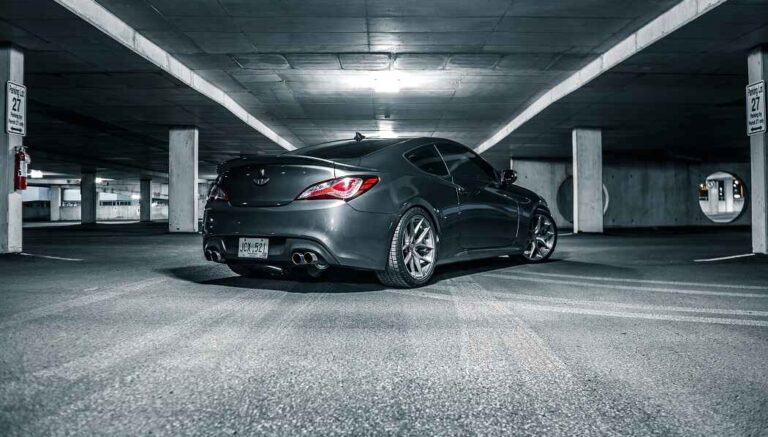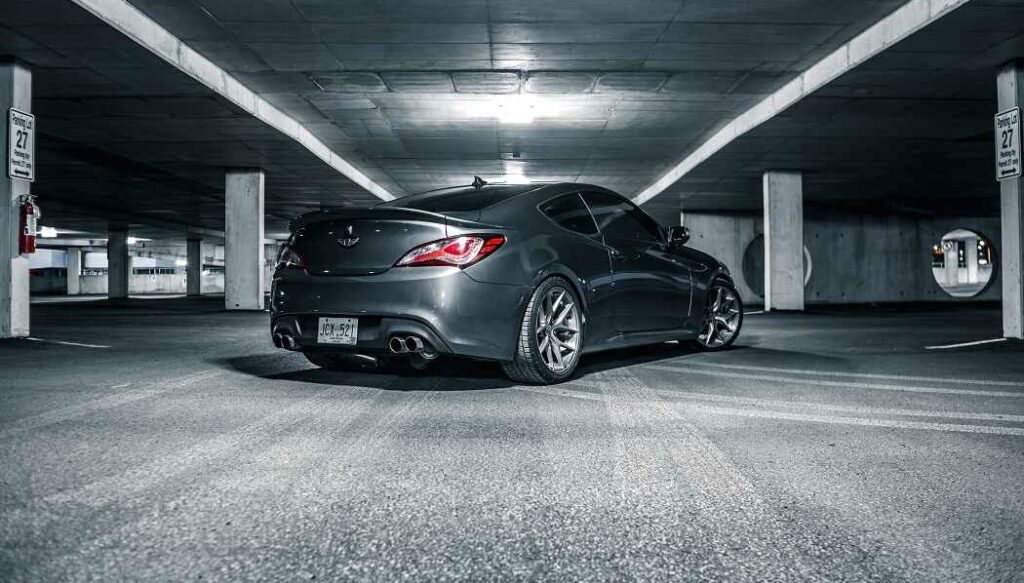
Should Garage Floor Be Light or Dark?
The color of your garage floor depends on your preference. Still, choosing the right color for your garage floor is a decision that goes beyond aesthetics. It can significantly impact the functionality and ambiance of the space. Looking for light or dark color of garage floor involves various factors, such as practicality, maintenance, and overall design goals.

Light-colored garage floors, such as shades of beige or gray, can create a sense of openness. Moreover, they enhance visibility, and make the area feel larger than it actually is. They also tend to reflect more light. On the other hand, darker garage floors, like deep grays or charcoal, can offer a sleek and contemporary look. However, if you want to balance these contrasting attributes, you need to follow a guideline. Let’s see whether garage floor should be light or dark.
Should Garage Floor Be Light or Dark?
The decision between a light or dark garage floor involves a balance of practicality and style. Both light and dark colors have advantages and disadvantages. For example, light colored floor will enhance the sense of space and visibility within the garage. But dark colored garage provide a sophisticated appearance and mask masking stains and tire marks potentially.
Consider factors like your garage’s lighting, the frequency of use, and your desired aesthetic when making this choice. Ultimately, the decision between light and dark garage floors rests on your preferences. It also depends on the overall vibe you wish to create in this functional yet often overlooked space.
What Is the Best Color Type for a Garage Floor?
While selecting the ideal color for your garage floor, you should consider various factors that contribute to both functionality and aesthetics. Let’s see some color types for a garage floor.
Light-Colored Floors
- Enhanced Visibility
Light-colored garage floors, such as soft grays, beige, or even white, reflect more light. This can improve visibility within the garage. It also makes it easier to find tools, navigate around obstacles, and perform tasks.
- Sense of Space
Light colors create an illusion of spaciousness. If your garage is on the smaller side, a light floor can make it feel larger and more open.
- Clean Aesthetic
Light floors tend to convey cleanliness and tidiness. They also give your garage a fresh appearance.
Dark-Colored Floors
- Sleek and Stylish
Dark garage floors, like deep charcoal or rich browns, can lend a modern and sophisticated look to the space. This can be particularly appealing if you’re using your garage as a workshop or a creative space.
- Camouflaging Stains
Dark floors have the advantage of hiding stains, oil drips, and tire marks more effectively than light floors. This can make maintenance easier and keep your garage looking better for longer.
- Warmer Atmosphere
Dark floors can create a cozy and inviting ambiance, which might be desirable if you plan to use your garage as a multipurpose area.
Considerations for Both
- Lighting
The natural and artificial lighting in your garage plays a significant role in how colors appear. Consider the intensity and direction of light when deciding on the color type.
- Functionality
Think about how you’ll use your garage. If it’s primarily a workspace for automotive repairs or DIY projects, a dark floor might be more forgiving. If you use it for storage or as an extension of your home, a light floor might be more appropriate.
- Personal Preference
Ultimately, the choice between light and dark garage floors comes down to your personal style and preferences. Consider the overall aesthetic you want to achieve and how it aligns with the rest of your home’s design.
How to Choose the Right Color between Light or Dark for a Garage Floor?
Choosing the right color between light and dark for your garage floor can be difficult. You must consider various factors before applying the color. Here is a guide to help you make an informed decision:
Step-1: Assess the Purpose
- Functionality
Consider how you primarily use your garage. If it’s a workshop for automotive repairs or DIY projects, a dark floor might better mask stains and spills. If it’s used for storage or as an extension of your home, a light floor might provide a cleaner and more spacious appearance.
Step-2: Evaluate Lighting Conditions
- Natural Light
Take note of the amount of natural light that enters your garage. Light-colored floors work well in spaces with ample natural light as they enhance brightness and openness.
- Artificial Lighting
Consider the type and placement of your garage’s artificial lighting. Proper lighting can mitigate the potential drawbacks of a dark floor, such as reduced visibility.
Step-3: Maintenance Considerations
- Stains and Dirt
Dark floors tend to hide stains and dirt better than light ones. If you anticipate frequent spills or the garage serving as a high-traffic area, a dark floor might require less upkeep in terms of cleaning and maintenance.
Step-4: Aesthetic Preferences
- Overall Style
Think about the overall style you want to achieve. Light floors lend a clean and airy feel, while dark floors exude modernity and sophistication. Consider how the chosen color aligns with your personal preferences and the rest of your home’s design.
Step-5: Perceived Space
- Illusion of Space
Light-colored floors can make a smaller garage appear larger due to their ability to reflect light. If you’re aiming for a more expansive feel, a light floor might be the better choice.
Step-6: Ambiance
- Atmosphere
Consider the atmosphere you want to create in your garage. Light floors contribute to a bright and energetic vibe, while dark floors can offer a cozier and intimate ambiance.
Step-7: Long-Term Vision
- Resale Value
If you’re concerned about resale value, consider what potential buyers in your area might prefer. Neutral tones often have broader appeal.
Step-8: Sample Testing
- Test Swatches
Before making a final decision, obtain small samples of both light and dark floor colors and place them in your garage. Observe how they look under various lighting conditions and how they complement the space’s surroundings.
Conclusion
In the quest to determine the ideal color for your garage floor, a nuanced approach emerges. The choice between light and dark is an interplay of functionality, aesthetics, and personal preferences. Assessing your garage’s purpose, lighting conditions, maintenance expectations, and the desired ambiance helps guide this decision.
Whether you search for the bright expansiveness of a light floor or the sophisticated coziness of a dark one, the ultimate goal is to create a garage space that aligns with your practical needs and visual aspirations. By carefully considering these elements, you can confidently select the color that transforms your garage into a harmonious blend of utility and style.
